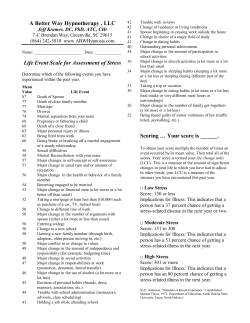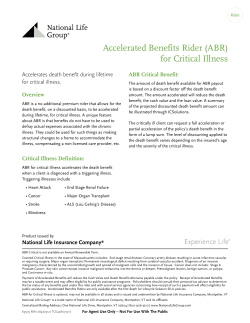
chickenpox Ear Infections Chickenpox
EarChickenpox Infections chickenpox Chickenpox Chickenpox is a common, very contagious viral infection that over 90% of people get during childhood unless they have been immunised. After an infection, some of the virus may stay in the body (in nerve cells) and at some later time the virus can become active again causing shingles. A vaccine is now available to protect children and adults against chickenpox. What is chickenpox? Chickenpox is caused by a virus called Varicella Zoster Virus. Most children who get chickenpox have a mild illness, but some can become quite ill. Usually adults who get chickenpox have a more severe illness. The illness with chickenpox usually lasts about seven to ten days. The illness may start with a fever and feeling unwell, like having a cold. In some children the first sign of the infection is the rash. The rash usually starts on the chest, and most spots appear on the chest and head (including in the hair), although some children and adults can have spots all over the body (except the palms of the hands and soles of the feet). The spots start as red, itchy lumps, which then become blisters. The top comes off of the blister and watery fluid escapes. Then a crust forms on the spot. This crust takes about five days to fall off. The spots often come in waves for several days so that there will be new lumps, blisters and crusting sores on the skin at the same time. How is chickenpox spread? The infection is spread when the person sneezes or coughs, or when someone touches the fluid in the blisters. It can also be spread by touching something that has touched the fluid from the blisters (e.g. a dressing which covered the sore). Chickenpox can be caught from the fluid in the blisters of someone with shingles, though this is rare. The person with chickenpox is contagious from the beginning of the illness (up to two days before the spots appear) until about five days after the first spots appear. So long as there are no new blisters or moist crusts on spots, the person will not be contagious even if there are still crusts on the skin. Chickenpox is very contagious (easy to catch). Over 90% of close contacts (such as other family members) will get chickenpox if they have not already had it or not been immunised. How long does it take to develop? Chickenpox usually takes around 14 to 15 days to develop after contact with someone who has it (range 10 to 21 days). Keeping children away from school or child care A child should be kept at home for five days after the first spots appear, or until all blisters are dry if this takes longer. Some scabs will still be there but as long as they are dry the child does not need to be kept out of school, or away from others. Health problems from chickenpox For most children chickenpox is a mild illness, however some can have spots over the whole body, including in the mouth and in the genital area. They may have encephalitis (infection of the brain). They may be quite unwell from this, but will usually recover fully. The spots are very itchy, and scratching can cause a bacterial infection (the same as impetigo, or school sores). An infected spot is more likely to leave a scar. (Note: the spots are very itchy. Expecting children not to scratch is usually too much to ask of them). Adults usually have a more severe illness, and a few get pneumonia, and some will die from the infection (this is rare, about three people in 100,000 healthy people with the infection die from it). Chickenpox can be a fatal illness for people who have immune problems (e.g. with HIV/AIDS, treatment for severe asthma or cancer). All these people need to be seen by a doctor urgently if they are in contact with chickenpox. There is a treatment which will protect them from the severe effects of the infection if they get the treatment soon after coming in contact with it. Chickenpox in pregnancy and newborn babies If a pregnant woman gets chickenpox during the first half of a pregnancy, there is a small risk that the unborn baby may be affected (less than two percent). Some of the effects include scarring, and birth defects. If a woman gets chickenpox from five days before delivery to two days after delivery, it is estimated that there is up to 30% risk that the baby will develop a severe infection. Many of these babies will die from the infection. Pregnant women should see their doctor if they have been in contact with chickenpox and are not certain that they have had chickenpox. If a pregnant woman has been exposed to chickenpox, and she has not already had the infection, she can, if needed, be given Zoster Immunoglobulin to give her temporary protection against the illness. This can be used for some other high risk people. What parents can do There is no specific treatment available which affects how bad the chickenpox is or how long it lasts. People who have other severe health problems affecting their immune system may be able to get some antiviral medications. Give the child plenty of drinks and give paracetamol or ibuprofen if needed, for fever and pain (see the topic ‘Using paracetamol or ibuprofen’). If blisters are in the mouth don’t give food or drinks that have a lot of acid or salt. (Orange juice is acidic, try pear juice instead. Icecream and jelly are often accepted.) You can get soothing mouth washes from a chemist. Soothing lotions, such as calamine lotion, or special oils that reduce itch can be used. See your chemist for advice about which ones to use and how they are best used. Some oils are added to cool baths. Sodium bicarbonate or oatmeal in the bath can also help soothe the itching. Anti histamine medicines can help with the itch. Talk to your doctor about this. The topic ‘Feeling sick’ has suggestions for caring for a sick child. Reye’s Syndrome Never give aspirin to children with chickenpox - there is an increased risk of a serious illness known as Reye’s Syndrome if a child under 16 years takes aspirin when they have chicken pox or some other viral infection such as influenza. Reye’s syndrome is a rare illness causing severe damage to the brain and liver, and it is often fatal even when the child is given intensive care. Immunisation It is recommended in Australia that children be immunised against chickenpox when they are 18 months old and again when they are in year eight at school. The vaccine is also particularly recommended for people in ‘high risk’ jobs such as health care, child care and teaching. Also for nonimmune women before pregnancy and nonimmune family members of people with immune system disorders. The vaccine may not be free for these people. The vaccine should not be given during pregnancy, however no problems have occurred yet when women have been given the vaccine accidentally while pregnant. Some people may still catch chickenpox after immunisation (only about 70% to 90% of people get fully protected), but the illness will be milder than if no immunisation had been given. Effects from immunisation Side effects are uncommon in healthy people. About 20% of children and adults will get some soreness at the site of the injection, five percent or less will get some fever and less than five percent will get a rash. Shingles seems to be triggered by stressful events in many people (such as an illness or grief). Shingles happens more often in people who have damaged immune systems. Symptoms of shingles High risk situations Medications such as acyclovir can be effective to treat chickenpox in people with damaged immune systems such as people with cancer or HIV/AIDS. The chickenpox vaccine can be used after exposure to chickenpox, however, it needs to be given as early as possible after exposure (within three days is best). Shingles Shingles (Herpes Zoster) occurs when the chickenpox virus which stayed in nerve cells after a chickenpox infection becomes active again. Shingles is not a new infection, it is a new outbreak of the old infection. Shingles only happens in people who have already had chickenpox. Shingles is uncommon before 12 years of age, but quite common in older people (especially over the age of 80 years). In the USA it has been estimated that between ten and 20% of people will get one or more episodes of shingles. Shingles starts with pain in the area served by the nerve in which the virus had been dormant (sleeping). The pain is due to damage of the nerve by the virus. This pain can range from tingling to very severe pain. Within five days from the start of the pain a rash will develop, like the rash of chickenpox, except that the rash will only be on the area of the body that the nerve goes to. This can be a band of skin around the chest, abdomen, face or (less commonly) an arm or a leg. Spots will appear, that turn into blisters and then become crusted. A person cannot catch shingles from someone else with shingles or with chickenpox, however the blisters of shingles do contain active virus, so direct contact with someone who has shingles can cause chickenpox in someone who has not had chickenpox before (e.g. giving someone who has shingles a hug so your skin touches the blisters). The virus is not spread through the air by coughing as can happen with chickenpox. Health problems from shingles The pain of shingles can persist for many weeks or months (postherpetic neuralgia). Another complication of shingles is infection of the spots, which can be quite severe and lead to scarring. If the rash of shingles is on the face, the cornea of the eye can be damaged. Treatment of shingles Anti viral medicine (e.g. acyclovir) can be very helpful for shingles if it is given early in the disease. The drug reduces the time taken for the spots to heal, stops the appearance of new spots and shortens the length of time with pain. Please Note: The brand names of products referred to in any of these parent health guidelines are not intended to be an exhaustive list of all commercially available products on the market. However, those names which are mentioned are wellknown brands and readily available on the market in Australia. For more information contact: Local Community Child Health Nurse Local Family Doctor Ngala Family Resource Centre Helpline 8.00 a.m. – 8.00 p.m. 7 days a week Telephone (08) 9368 9368 Outside metro area – Freecall 1800 111 546 www.ngala.com.au Parent Help Centre/Parenting line Telephone (08) 9272 1466 (24 hr service) Outside metro area – Freecall 1800 654 432 Delivering a Healthy WA © Children, Youth and Women's Health Service, reproduced with permission. The South Australian Government does not accept responsibility for the accuracy of this reproduction. The original version is published at http://www.cyh.com Warning This document is published as general information only. You should always consult a healthcare professional for diagnosis and treatment of any health condition or symptoms. The advice and information contained herein is provided in good faith as a public service. However the accuracy of any statements made is not guaranteed and it is the responsibility of readers to make their own enquiries as to the accuracy, currency and appropriateness of any information or advice provided. Liability for any act or omission occurring in reliance on this document or for any loss, damage or injury occurring as a consequence of such act or omission is expressly disclaimed. HP 8873 JULY’06 21451 Disclaimer
© Copyright 2025
















